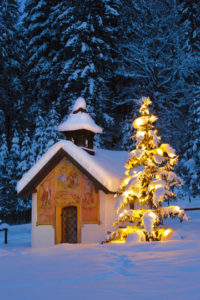Q. Every year, I harvest some of my green tomatoes from the frost hoping they’ll ripen indoors, but they never do. I usually place them in the sun on the window sill but eventually I end up throwing them out. How can I successfully ripen them this year?
A. Leaving tomatoes out to ripen in the open air doesn’t work as you’ve found out. You can ripen tomatoes off the vine in a shallow box with a lid to create a simple ripening chamber. The bottom of the box is lined with a one-inch layer of newspaper and you place the tomatoes next to one another but don’t let them touch each other. A second layer can be added, separated with another layer of newspaper, but no more. The box is then place in a cool out of the way location like the garage. Every five to seven days, you open the lid a remove those that have turned red. The chamber traps the ethylene gas which is given off by the tomatoes. You can hasten the ripening by adding an apple or other fruit that releases ethylene. I know an old school method would have you wrap each tomato separately in newspaper or other material and store them in a box. I think it’s tedious and the lid makes that unnecessary. You should select tomatoes that haven’t been damaged by the cold. So, it may be too late for this year but I’d still try few anyway to get a feel for the technique.
Q. I have two Flowering Pear trees planted on the same day exactly three years ago. One turns color in late October while the other is just turning color now. Why don’t they color up at the same time?
A. Flowering Pear, Pyrus calleryana, is a deciduous ornamental flowering pear. Bradford, Whitehouse, Aristocrat, Redspire, and Capital are some of the varieties available today. The Flowering Pear was first introduced and bred for the purposes of creating a fireblight resistant variety. Unfortunately, this never materialized as they are also susceptible to the disease. They’re typically a pyramidal trees with vertical branching and rapid growth that is both tolerant of dryness and pollution. They produce beautiful white flowers, deep green summer foliage, and red to purple fall color. The three inch white flowers cover the trees complete in late February or March so it resembles a huge powder puff.
There are two possible answers to your question. One could be they’re different varieties which I don’t think is the case and the other is how they were propagated. Plant genetic dictates the timing as to when the leaves turn color along with many other characteristics. The green dominant pigment in growing plants is produced by chlorophyll. The other leaf colors are only apparent when plants stop growing. Those started from seeds are very unpredictable while cuttings mirror its mother plant. So, it’s very possible your trees came from trees with different coloring time periods although the same variety. The time period when the leaves turn color in the Chinese Pistache tree is between four to five weeks; however, it’s much broader with a Flowering Pear. It’s not unusual to see an individual tree in a row of Flowering Pears to show color starting in late August with the rest progressing through mid December. Also, there is no way to tell for sure whether it will color up early mid season or late ahead of time.
Q. Will I harm next year’s crop of grapes by cutting back old, ugly branches now? I did that last year and had very few grapes this year.
A. January/February is the traditional time of the year to prune grapes. However, they can be pruned earlier if you choose. Grapes are dormant once the leaves start to turn color and drop off. In the fall, the green leaves are storing energy and food for next year so you don’t want to remove them too early. Pruning grapes early does not affect the production. Improper pruning by cutting off the fruiting spurs is the primary cause for little to no grapes. Grape vines are a vigorous grower that produce lots of stems and leaves each year. For many, it’s a confusing mass to prune, especially if there are no defined vertical trunk and laterals. Grapes need to grow on a trellis structure with one main trunk and several lateral branches. A typical fence is not necessarily the ideal trellis for grapes. With time, the fence is damaged by the growth. Poor air circulation increases problems with diseases and the vines are difficult to maintain. Also, your neighbor may not appreciate the vegetation growing on his or her side. A separate trellis structure off the fence improves the maintenance and disease issue besides avoiding a neighbor dispute. In preparation I’d watch several of the videos on You Tube. This should give you a good idea if you pruning technique needs to be modified. Google “spur and cane pruning grapes.”
Note: There are two methods of pruning grapes, cane and spur pruning. Here is a variety list as which pruning method is the best.
http://www.lecooke.com/Nursery/Care/Grape-Pruning-Cane-vs-Spur.pdf

